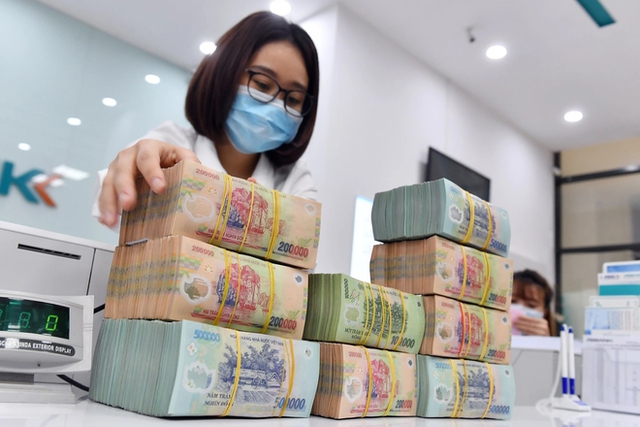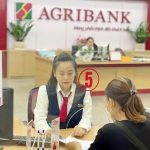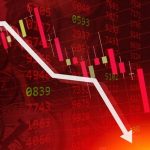
Illustrative image
In June alone, the market witnessed around 23 commercial banks raising deposit interest rates, with many banks adjusting interest rates 2-3 times. And at the beginning of July, a series of banks also adjusted their deposit interest rates upwards, including Eximbank, NCB, SeABank, BaoVietBank, and Saigonbank. Notably, some banks have increased deposit interest rates for terms below six months to 4.7%/year, approaching the ceiling rate of 4.75%/year set by the State Bank of Vietnam.
According to analysts, the low growth of deposits from individuals and enterprises in the first months of the year, coupled with the recovery of credit growth, has prompted many banks to raise deposit interest rates to ensure a balance in capital sources. In addition, the State Bank of Vietnam’s (SBV) interventions through bond and foreign currency sales tools have also affected the VND liquidity of banks.
In a recently published strategy report, KB Vietnam Securities (KBSV) stated that banks’ increase in deposit interest rates stems from the liquidity shortage in the market due to SBV’s moves to stabilize the exchange rate.
KBSV believes that deposit interest rates will continue to rise by 0.7-1.0 percentage points from now until the end of the year, reaching levels similar to the Covid-19 trough in 2020-2021, due to pressure from exchange rates and recovering loan demand.
Exchange rates remain the main pressure point, keeping deposit interest rates on an upward trajectory. In the base-case scenario, KBSV forecasts that exchange rates will not cool down soon and may even experience localized tension at certain times, requiring the SBV to continue intervening by selling foreign currencies. This, along with maintaining interbank interest rates at a sufficiently high level to curb exchange rate speculation, will directly impact the system’s liquidity and drive up deposit interest rates in the formal market, especially for small and medium-sized private joint-stock commercial banks with less flexible sources of funds and those experiencing robust credit growth.
Additionally, the expected recovery in loan demand will increase capital mobilization needs, further pushing deposit interest rates higher towards the end of the year. Specifically, credit growth is projected to rebound more noticeably in the second half of 2024, driven by key factors: (1) Robust import turnover in recent months indicates positive prospects for the manufacturing sector and export activities in the coming period; (2) Monetary and fiscal policy transmission effects improve domestic demand; and (3) The real estate market recovers.
In reality, credit in the second quarter has shown improvement, reaching 4.45% as of June 24 (considering only the second quarter, credit increased by 4.2 percentage points compared to the first quarter, significantly higher than the 2.1 percentage point increase in the second quarter of 2023). This improvement was mainly driven by the real estate sector and infrastructure development loans.
In its July strategy report, Dragon Capital Securities (VDSC) also noted that deposit interest rates have recovered from their lows, averaging an increase of about 0.3-0.5 percentage points compared to the end of March 2024. However, deposit interest rates are still lower by about 0.15-0.45 percentage points compared to the end of last year.
VDSC considers the increase in deposit interest rates to be a reasonable scenario based on the dynamics of exchange rate expectations and interest rate policies.
Regarding exchange rates, the analysis team assesses that pressure on exchange rates persists. The strength of the US dollar is expected to be sustained due to: (1) the interest rate differential between the US and other countries remains high as the Fed cuts interest rates slower and less than other central banks; (2) many economists believe that if Trump wins the upcoming US presidential election, inflation will rise again, affecting the Fed’s interest rate decisions; and (3) prolonged geopolitical risks increase the demand for USD as a safe-haven asset. Additionally, due to seasonal factors, foreign currency demand (for imports) may surge again in the third quarter, before the FED officially reverses its interest rate policy, prolonging exchange rate pressure during this period.
Meanwhile, after ten consecutive weeks of selling foreign currencies to stabilize the exchange rate (from April 22), the SBV is estimated to have sold an amount equivalent to approximately 30% of the 2022 drawdown. For the upcoming period, to protect foreign reserves and stabilize exchange rates, VDSC does not rule out the possibility of the SBV implementing an interest rate hike (0.2-0.5 percentage points) in the third quarter.
On the other hand, the recovery of credit growth in the second half of this year is also noteworthy. As of the end of June 2024, credit growth reached 4.45% compared to the beginning of the year. Although credit growth has been slow compared to the same period in the first half of the year, VDSC believes that credit will pick up strongly towards the end of the year.
“This, together with the net withdrawal of funds through foreign currency sales, could create liquidity pressure for the banking system and the interest rate environment in the second half of 2024,” the analysis team remarked.
However, VDSC pointed out that the increase would not be as drastic as in 2022 due to different macroeconomic contexts. The year 2024 lacks the shock factors of 2022, such as sudden surges in credit demand and abrupt changes in monetary policy, which caused a sharp rise in interest rates. Additionally, the pressure of net foreign currency outflows will ease significantly if there is a convergence effect on interest rates (FED reduces interest rates while SBV increases interest rates in the second half of the year). Therefore, VDSC forecasts that an increase of about 0.5-1.0 percentage points to return to pre-pandemic average interest rate levels is a reasonable scenario.
Latest Interest Rates at Agribank in February 2023: Highest Rate for 24-month Term
Interest rates for deposits at Agribank have further decreased in early February 2024 compared to January. Specifically, individual customers’ deposits are subjected to interest rates ranging from 1.7% to 4.9% per annum, while business customers’ deposits are subjected to interest rates ranging from 1.7% to 4.2% per annum.














